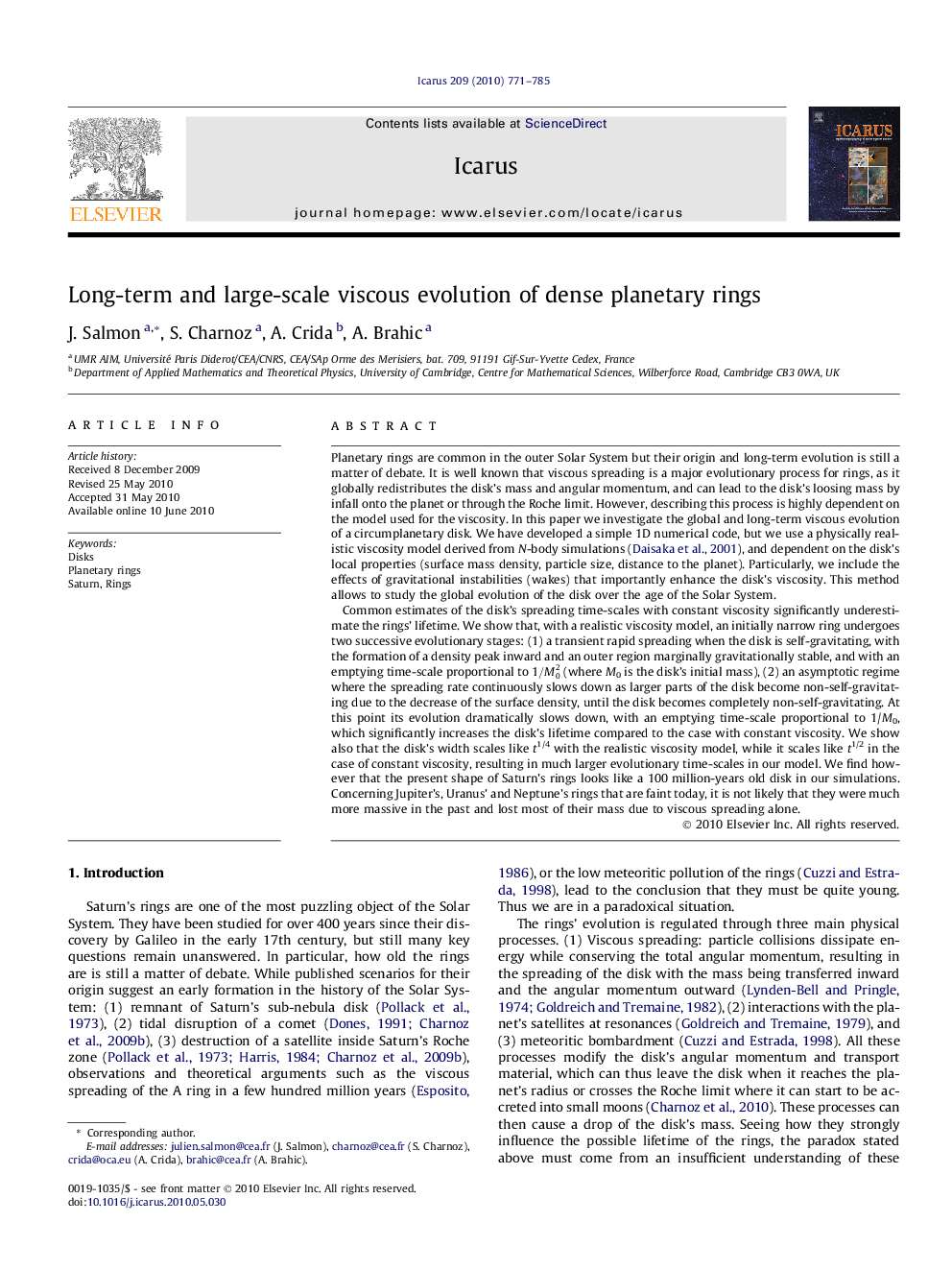| Article ID | Journal | Published Year | Pages | File Type |
|---|---|---|---|---|
| 1774045 | Icarus | 2010 | 15 Pages |
Abstract
Common estimates of the disk's spreading time-scales with constant viscosity significantly underestimate the rings' lifetime. We show that, with a realistic viscosity model, an initially narrow ring undergoes two successive evolutionary stages: (1) a transient rapid spreading when the disk is self-gravitating, with the formation of a density peak inward and an outer region marginally gravitationally stable, and with an emptying time-scale proportional to 1/M02 (where M0 is the disk's initial mass), (2) an asymptotic regime where the spreading rate continuously slows down as larger parts of the disk become non-self-gravitating due to the decrease of the surface density, until the disk becomes completely non-self-gravitating. At this point its evolution dramatically slows down, with an emptying time-scale proportional to 1/M0, which significantly increases the disk's lifetime compared to the case with constant viscosity. We show also that the disk's width scales like t1/4 with the realistic viscosity model, while it scales like t1/2 in the case of constant viscosity, resulting in much larger evolutionary time-scales in our model. We find however that the present shape of Saturn's rings looks like a 100 million-years old disk in our simulations. Concerning Jupiter's, Uranus' and Neptune's rings that are faint today, it is not likely that they were much more massive in the past and lost most of their mass due to viscous spreading alone.
Keywords
Related Topics
Physical Sciences and Engineering
Earth and Planetary Sciences
Space and Planetary Science
Authors
J. Salmon, S. Charnoz, A. Crida, A. Brahic,
